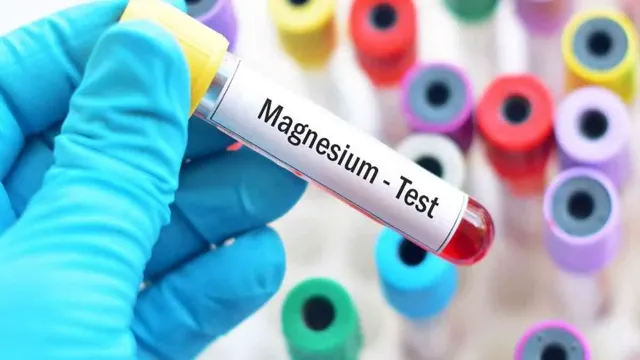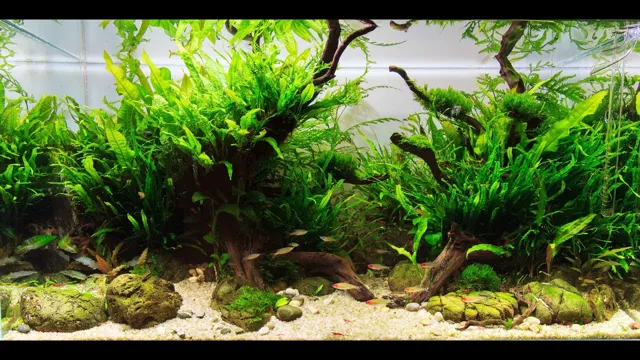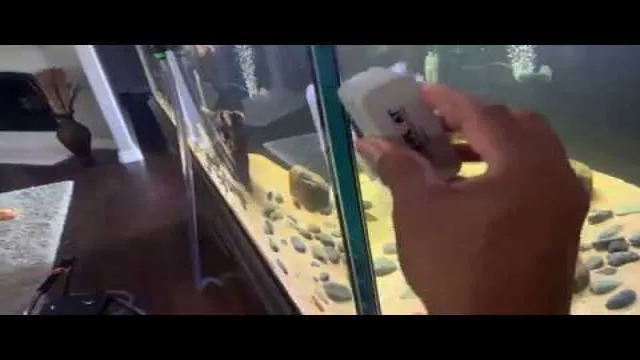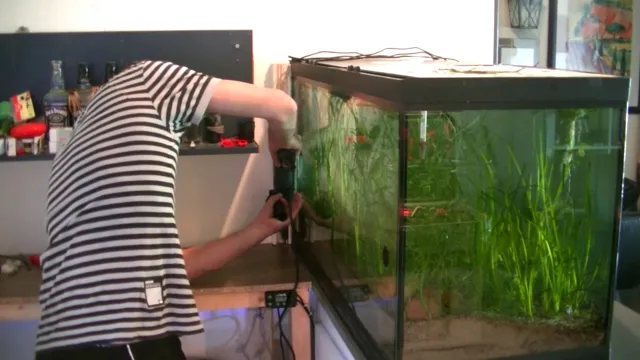How to Lower Magnesium in Saltwater Aquarium: Effective Tips and Techniques

Have you noticed that the magnesium levels in your saltwater aquarium are a bit too high? High levels of magnesium can cause problems for your marine life, such as stunted growth and brittle skeletons. But don’t worry, it’s not difficult to lower magnesium in your aquarium with a few simple steps. Think of it like trying to lower the sugar content in your diet.
You wouldn’t completely cut out all sweet things but instead, make a few adjustments to find a healthy balance. Similarly, you don’t need to completely eliminate magnesium in your aquarium, but rather adjust its levels to a suitable amount. In this blog post, we’ll take a look at some ways to lower magnesium levels in your saltwater aquarium so that your marine creatures can thrive.
From making changes to your water source to using specialized reactors, we’ve got you covered. So, let’s dive in and explore the world of aquarium maintenance.
Understanding Magnesium in Saltwater Aquariums
If you have a saltwater aquarium, you might have heard that magnesium is an essential element for the health of your coral and other invertebrates. However, having too much magnesium in your tank can cause problems, including slowing down the growth of your coral and creating an alkaline environment that isn’t ideal. So, how can you lower magnesium in saltwater aquariums? There are a few methods you can try, such as performing partial water changes with low-magnesium water or using magnesium-reducing supplements.
It’s important to monitor your magnesium levels regularly and make gradual changes to prevent shocking your aquarium’s ecosystem. By maintaining the correct magnesium levels, not only will your coral and invertebrates thrive, but you’ll also prevent any negative impacts on the overall health of your aquarium.
What is Magnesium and Why is it Important?
Magnesium is an essential element in saltwater aquariums that plays a crucial role in the growth and development of marine organisms. It is a vital component of seawater, and its concentration is critical to the health and well-being of the marine creatures living in your tank. Low magnesium levels can lead to a range of problems, including decreased immune function, stunted growth, and even death in severe cases.
As such, it is crucial to monitor magnesium levels regularly and ensure they remain within the optimal range. While magnesium is found naturally in seawater, it can become depleted over time, especially if you have a heavily stocked tank or regularly perform water changes. Therefore, it may be necessary to supplement your aquarium with magnesium to ensure your marine life thrives.
With the right care and attention, you can maintain healthy magnesium levels in your saltwater aquarium and provide your marine creatures with the best possible environment to thrive.

How High Magnesium Levels Affect Your Aquarium
Magnesium levels are an important factor to consider in maintaining a healthy saltwater aquarium. High levels of magnesium, while less common than low levels, can still pose a problem for fish and plant life in your tank. Magnesium is essential for the growth and maintenance of coral, and it can also help prevent the buildup of calcium deposits that can harm the system over time.
However, if the levels are too high, it can lead to problems with calcification in the tank, which can inhibit coral growth and other important processes. It’s important to monitor magnesium levels regularly to ensure they stay within the appropriate range. By doing so, you can help protect the delicate balance of your aquarium and ensure its inhabitants thrive.
Testing Your Aquarium’s Magnesium Levels
As a saltwater aquarium owner, it’s important to test your magnesium levels regularly to ensure a healthy environment for your marine life. If you find that your magnesium levels are too high, there are a few steps you can take to lower them. One option is to perform a partial water change, which involves removing a portion of the aquarium water and replacing it with fresh, clean water.
This can help dilute the concentration of magnesium in the tank. Another option is to use a magnesium-removing product or media, such as activated carbon, which can adsorb excess magnesium from the water. Additionally, it’s important to monitor your feeding habits and ensure that you’re not overfeeding your fish or adding too many supplements to the water, as this can contribute to high magnesium levels.
By taking these steps and regularly testing your magnesium levels, you can maintain a healthy environment for your aquatic pets.
Importance of Regular Testing
Magnesium testing is an essential aspect of maintaining a healthy aquarium. Magnesium plays a vital role in the overall health of reef-building organisms and helps regulate pH levels in the water. Low levels of magnesium can inhibit calcification and growth of corals and other invertebrates, leading to issues with their overall health.
Testing the magnesium levels in your aquarium can help you identify any potential issues and take corrective action to maintain a healthy environment for your aquatic pets. Regular testing is the best way to ensure that your magnesium levels are within the appropriate range, and any necessary adjustments can be made promptly. Investing a little bit of time and effort into testing your aquarium’s magnesium levels can help prevent problems down the line and keep your aquatic pets healthy and happy for years to come.
Different Methods of Testing Magnesium Levels
Testing magnesium levels in your aquarium is crucial for maintaining a healthy environment for your fish and other aquatic life. There are different methods to test magnesium levels, including using test kits, meters, and colorimeters. Test kits involve adding a reagent to a water sample and comparing the resulting color to a chart.
Meters use probes to directly measure magnesium levels, while colorimeters use light to analyze the water sample’s color and calculate the magnesium concentration. Each method has its advantages and disadvantages, and the choice ultimately depends on the aquarium owner’s preferences and budget. Regardless of the method used, regular testing of magnesium levels is essential for ensuring a thriving aquatic ecosystem in your aquarium.
Ways to Lower Magnesium in Saltwater Aquarium
If you’re dealing with high levels of magnesium in your saltwater aquarium, there are a few ways to lower it. One option is to perform partial water changes with low magnesium saltwater. This can gradually reduce the overall magnesium levels in your aquarium.
Another approach is to add calcium supplements, which can counterbalance the magnesium and bring it back to a more desirable level. You can also try using magnesium-removing media, such as various types of activated carbon, to filter the water and remove excess magnesium. Lastly, it’s important to ensure that your aquarium has the right balance of trace elements, as too much of certain elements, such as potassium, can contribute to high magnesium levels.
By taking these steps, you can help maintain a healthy and balanced environment for your fish and other aquatic creatures.
Water Changes
If you’re struggling with high levels of magnesium in your saltwater aquarium, there are a few ways to help bring those levels down. One of the simplest and most effective methods is to perform regular water changes. By removing a portion of the water and replacing it with fresh water that has lower levels of magnesium, you can gradually decrease the overall magnesium content in the tank.
Another option is to use a magnesium-reducing product specifically designed for saltwater aquariums. These products can help bind excess magnesium in the water, making it easier to remove through filtration or water changes. It’s important to monitor the magnesium levels in your tank regularly and adjust your maintenance routine accordingly to ensure a healthy environment for your aquatic creatures.
Using Chemical Supplements
Magnesium in Saltwater Aquarium Are you experiencing high levels of magnesium in your saltwater aquarium? One way to lower magnesium levels is to use chemical supplements. There are several products on the market that can help bring down magnesium levels and maintain a healthy balance in your aquarium. However, using chemical supplements should be done with caution, as too much can be harmful to your aquatic pets.
It’s important to follow the recommended dosage and monitor magnesium levels regularly. Another way to lower magnesium levels is through regular water changes. This helps dilute the excess minerals and keep your aquarium environment healthy.
Remember, maintaining proper magnesium levels is crucial for the health and well-being of your saltwater aquarium inhabitants. So, keep an eye on those levels and take the necessary steps to keep them in check.
Using a Reverse Osmosis (RO) System
If you’re struggling with high magnesium levels in your saltwater aquarium, using a reverse osmosis (RO) system can be a gamechanger. RO systems work by filtering out dissolved salts, minerals, and other impurities, including excess magnesium. This means that by using an RO system, you can effectively lower the magnesium levels in your tank.
However, it’s essential to note that while RO systems can remove excess magnesium, they may also remove other beneficial minerals from the water. It’s critical to monitor the water chemistry and add necessary supplements to make sure your fish and other organisms have everything they need to thrive. By incorporating an RO system into your maintenance routine, you’ll be able to tackle high magnesium levels and promote a healthier, thriving saltwater aquarium.
Preventing High Magnesium Levels in the Future
If you’re worried about high magnesium levels in your saltwater aquarium, there are several steps you can take to prevent this issue. First and foremost, make sure you’re testing your water regularly to keep track of your levels. It’s also important to ensure you’re using high-quality salt mix that is specifically designed for use in a reef aquarium.
Be mindful of the types of supplements and additives you’re adding to your tank, as some can contain high levels of magnesium. It’s also a good idea to regularly perform water changes to help dilute any excess minerals in the water. Keeping a balanced diet for your fish and invertebrates can also help regulate magnesium levels in the tank.
And lastly, if you do find that your magnesium levels are too high, you can do a partial water change using RO/DI water to help bring them back down. By following these steps, you can help maintain a healthy environment for your aquatic pets and prevent any negative impact from high magnesium levels.
Regular Water Changes
Regular water changes are essential for maintaining proper water chemistry in your aquarium. One of the benefits of performing frequent water changes is that it helps prevent high magnesium levels in the future. When magnesium levels become too high, it can lead to problems such as poor coral growth and algae outbreaks.
By performing regular water changes, you can keep magnesium levels in check and avoid these issues. It’s important to remember that water changes should be done on a consistent basis and not as a reactive measure. By staying on top of regular maintenance, you can ensure a healthy and thriving aquarium for your aquatic pets.
So, don’t forget to perform water changes regularly to keep your tank in top shape!
Proper Use of Chemical Supplements
One of the most critical aspects of properly using chemical supplements is ensuring that you don’t end up with high magnesium levels. While magnesium is essential for many bodily functions, too much of it can cause serious health problems. To avoid this, you need to be very careful when introducing any new supplement into your routine.
Always start with small doses and gradually increase them over time. Additionally, be sure to monitor your blood magnesium levels regularly and adjust your supplement intake accordingly. By taking these precautions, you can prevent any adverse effects and keep your body in top condition.
Remember, it’s always better to be safe than sorry when it comes to your health!
Maintaining a Healthy Balance in Your Aquarium
When it comes to maintaining a healthy balance in your aquarium, preventing high magnesium levels is crucial. One way to do this is by regularly monitoring and controlling the sources of magnesium in your tank. It’s important to keep track of any supplements or additives you use, as some can contain high levels of magnesium.
Additionally, regularly testing your water and conducting water changes can help prevent a buildup of magnesium. Another key factor is ensuring proper water flow and circulation, as stagnant water can lead to an increase in magnesium levels. Taking these precautions can help keep your aquarium’s magnesium levels in check and promote a healthy environment for your aquatic life.
Conclusion
In conclusion, lowering the magnesium levels in your saltwater aquarium may seem like a daunting task, but rest assured, it’s not rocket science! It simply requires a bit of effort, attention to detail, and the right tools at your disposal. Much like a chef using just the right ingredients and techniques to create a savory dish, you too can achieve a pristine aquatic environment by selecting quality products, testing regularly, and making any necessary adjustments. So don’t be a fish out of water, take the plunge and start working towards magnesium nirvana in your saltwater aquarium!”
FAQs
Why is high magnesium level dangerous for saltwater aquariums?
High magnesium levels can lead to alkalinity imbalances and cause harm to corals and other marine animals in the tank. It can also negatively impact the growth of beneficial bacteria in the aquarium.
How to measure the magnesium levels in a saltwater aquarium?
You can measure the magnesium levels in your aquarium using test kits specifically designed for this purpose. These test kits are widely available at pet stores.
How to remove excess magnesium in a saltwater aquarium?
The best way to lower magnesium levels in your aquarium is by performing partial water changes regularly. Using a specialized filtration system that removes excess magnesium can also be effective.
What foods should be avoided if magnesium levels are high in a saltwater aquarium?
Foods that are naturally rich in magnesium, such as algae and seaweed, should be avoided if magnesium levels are high in the aquarium.
Can high magnesium levels cause stress to marine creatures in a saltwater aquarium?
Yes, high magnesium levels can cause stress to marine creatures in a saltwater aquarium and can lead to health issues in the long run.
How often should the magnesium levels be checked in a saltwater aquarium?
Magnesium levels in a saltwater aquarium should be checked at least once a month, especially if you notice any changes in the aquarium’s environment or behavior of the marine creatures.
What is the ideal magnesium level in a saltwater aquarium?
The ideal magnesium level in a saltwater aquarium is between 1200-1350 ppm (parts per million). It is important to maintain this level to ensure the optimum health of marine animals and flora in the aquarium.






